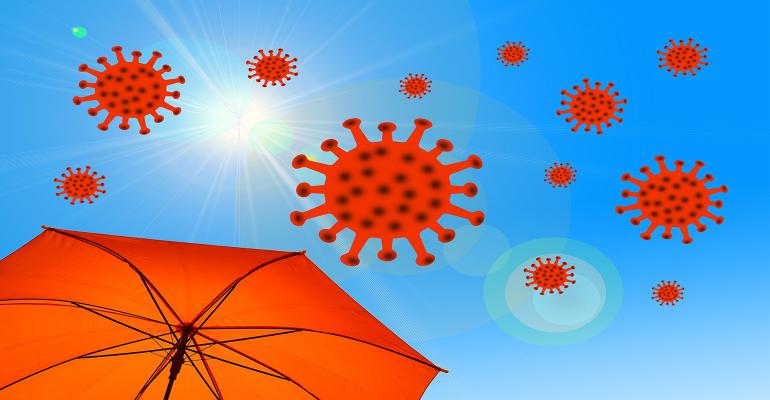At Omnia Health Live, Dr. Michael Fuchsjäger, Professor of Radiology and Chairman of the Department of Radiology at the Medical University Graz, Austria, will be participating in a panel to discuss the key decision points around imaging in COVID-19 patients. The panel will review where Artificial Intelligence (AI) Radiology software can go wrong and what radiologists worldwide need to be wary of.
Prof. Fuchsjäger told Omnia Health Magazine: “This panel will be very interesting and features expert speakers that are renowned not only locally but also on a national and international level. We will be going through the major points that are important for radiology today.”
He explained that one of the first steps in dealing with a pandemic is to be prepared. This involves having structures in place for communication within teams. “It is important that in times of crisis all co-workers get the important information, are on the same page and don’t feel cut-off. This can be achieved by creating respective taskforces as soon as possible with persons who are in charge of different chapters of the radiology department and to communicate frequently about how standard operating procedures or guidelines have been changed and what is actually in place now and how the situation can be handled,” he said.
Secondly, it is important to be proficient in using Personal Protective Equipment (PPE) in such pandemic scenarios. This includes specific gowns, glasses, gloves, masks etc. This also includes how radiologists interact with patients and how to keep the time they spend in the facilities short.

Dr. Michael Fuchsjäger
“You have to cut short examination protocols as well as personal interaction with patients,” Dr. Fuchsjäger said. “However, this doesn’t mean that we don’t talk to our patients anymore, but, for instance, we can conduct a discussion before the examination, and try to make the consenting procedure as brief and to the point as possible. All these have to be reinforced for the department and co-workers. These are very important points that seem very easy or straightforward but still people need to bear this in mind and act accordingly.”
Reporting and organising the workforce
With regards to the diagnosis of COVID-19 and imaging features on CT and chest X-ray, physicians need to be made aware of specific findings as soon as possible so that they can identify the potential presence or absence of this disease. Dr. Fuchsjäger stressed that it is important to integrate structured reporting for chest CT that involves reporting on a four-grade scale, where the radiologist can grade the probability of COVID-19 being present, right from high probability to almost zero probability.
Another important consideration to be kept in mind is the organisation of intra- and inter-departmental workflows. For instance, at the peak of the pandemic, hospitals need to make sure that it can receive or hold all the patients that require hospital care. This involves rescheduling and postponing examinations, procedures, and surgeries that don’t have to necessarily happen now but can take place in the coming months. This would free up the hospital to handle all the pandemic patients.
According to Dr. Fuchsjäger, this would ensure that the total number of patients during the peak of the pandemic in the hospital is much lower than the usual number of patients. This also means that all physicians don’t need to be present – a) because there are fewer patients and, b) you want to make sure that there is always a group of physicians in every department that is healthy. So, all major departments should have at least two cohorts of co-workers, where one group is at home for two weeks, and the other one works for two weeks. And after two weeks, there will be a turnaround. With this, the hospital can more or less guarantee that at least half of the staff are always healthy to work.
He concluded: “PPE needs to be available at all times so that when disaster strikes, everything is in place. In many countries, there was a shortage of PPE, which led to nurses, physicians, and radiographers getting infected with the coronavirus. It is important that the PPE gear is available and that hospitals can adapt standard operating procedures, and even the use of machines, during such a pandemic. We have learnt a lot during this time, and I think that major hospitals around the world will be in a much better place if something like this ever happens again.”
Omnia Health Live
Prof. Fuchsjäger is participating in the ‘Key decision points around imaging in COVID-19 patients’ panel at Omnia Health Live on Wednesday, June 24 at 14:00 GST. Register for free to attend his virtual conference session, as well as hear from a host of other leaders in healthcare.

